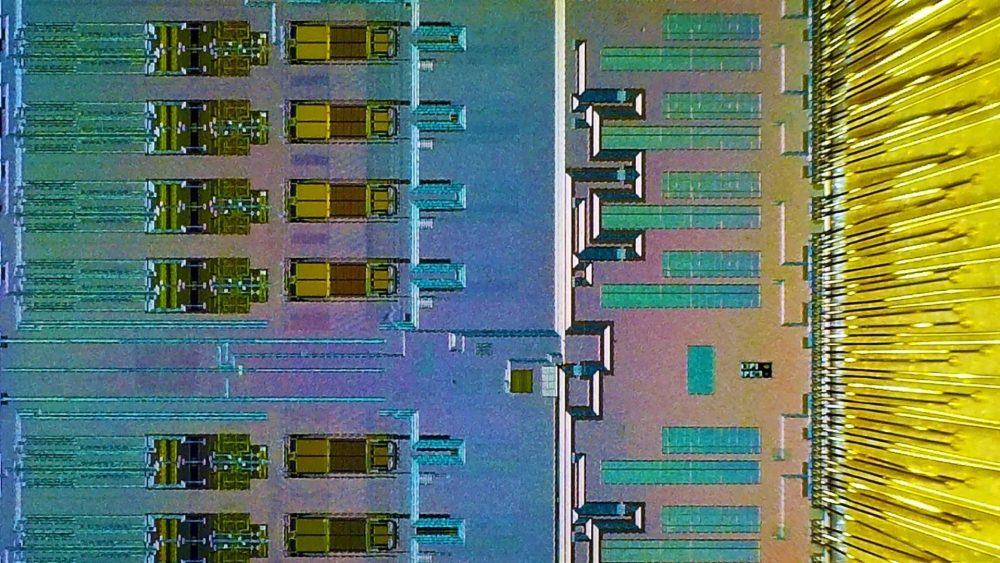Deep beneath the Swiss-French border, the Large Hadron Collider (LHC) unleashes staggering levels of energy and radiation, enough to destroy ordinary electronics. To meet this extreme challenge, Columbia University engineers have developed ultra-rugged, radiation-resistant chips that now play a critical role in recording subatomic particle collisions. These custom analog-to-digital converters (ADCs) not only withstand this brutal environment but also enable scientists to study elusive phenomena such as the Higgs boson by filtering and digitizing key collision data.
Where Physics Meets Electronics
The LHC, a 17-mile circular accelerator, smashes particles together at near-light speed, creating energetic collisions that offer insights into the fundamental makeup of the universe. These collisions produce immense volumes of data, along with enough radiation to fry nearly any conventional chip.
Standard commercial electronics fail under such conditions, and the market for radiation-hardened components is too small for most manufacturers to support. “Industry just couldn’t justify the effort, so academia had to step in,” said Peter Kinget, Columbia’s Bernard J. Lechner Professor of Electrical Engineering. “The next discoveries made with the LHC will be triggered by one Columbia chip and measured by another.”
A New Breed Of Radiation-Resistant Chips
Led by Kinget, Columbia’s team engineered custom ADCs that operate reliably within the LHC’s punishing environment. Their most recent paper was published July 1 in the IEEE Open Journal of the Solid-State Circuits Society. These devices operate in one of the most extreme and scientifically significant settings in physics.
“These collaborations between physicists and engineers are essential,” added John Parsons, Columbia physics professor and ATLAS detector team leader. “Cutting-edge instrumentation is critical to pushing the boundaries of our understanding.”
Capturing Signals With Atomic Precision
At the core of the LHC’s ATLAS detector is the liquid argon calorimeter, which uses ultra-cold argon to trace every particle that passes through. Columbia’s ADCs translate these faint analog pulses into highly accurate digital measurements, essential for identifying scientifically valuable events.
“We tested commercial components, they just died,” said Rui (Ray) Xu, a Columbia PhD student. “We realized we’d have to design our own to survive the radiation.”
Smart Designs Using Proven Materials
Rather than inventing a new manufacturing process, the team used CERN-validated semiconductor technology combined with smart circuit-level design choices. They selected and arranged components to resist radiation damage while implementing real-time error correction systems. The result: electronics capable of operating reliably at CERN for more than a decade.
Triggering And Digitizing The Universe
Columbia has built two major chips for the ATLAS experiment. The first, a trigger ADC, is already in operation. Introduced in 2017 and validated in 2022, this chip helps process a billion collision events per second, selecting only the most promising ones for deeper study.
The second, a data acquisition ADC, just passed final testing and entered full production. It will be installed in the next major LHC upgrade, capturing unprecedented digital detail from subatomic events like those involving the Higgs boson, whose discovery in 2012 earned a Nobel Prize. However, many of its properties remain a mystery.
A Model For Cross-Disciplinary Collaboration
This project exemplifies how engineers and physicists can co-develop tools that unlock fundamental scientific breakthroughs. “As an engineer, contributing directly to a global physics effort makes this project really special,” Xu noted.
Global Impact, Local Design
Designed by teams at Columbia and the University of Texas at Austin, and funded by the National Science Foundation and U.S. Department of Energy, the ADC chips are a key part of a wider international collaboration coordinated by Columbia’s Nevis Laboratories.
As CERN continues to explore the unknown, Columbia’s rugged chips will remain at the heart of its search, turning raw collisions into insights that could redefine our understanding of the universe.


